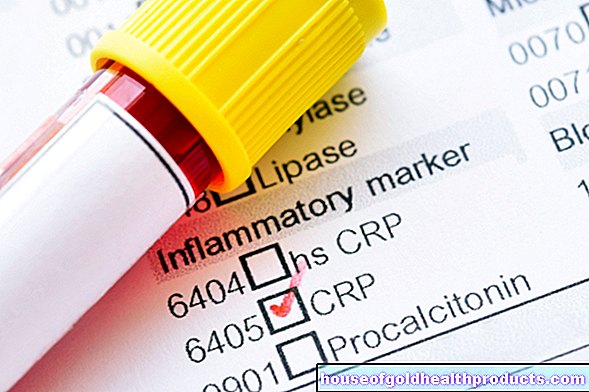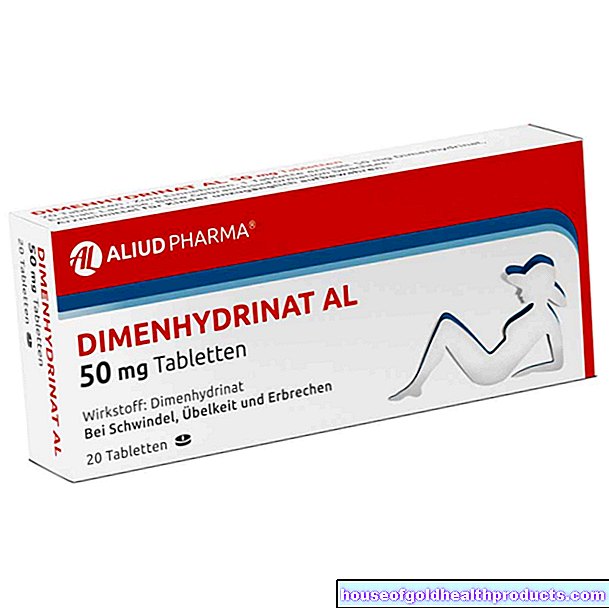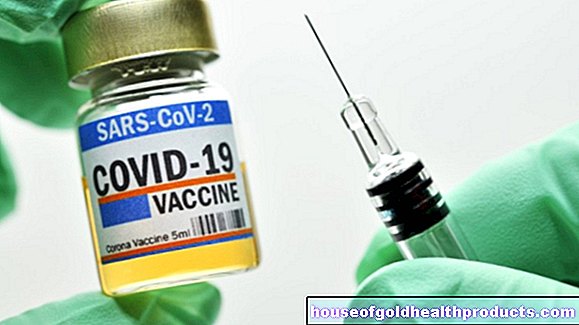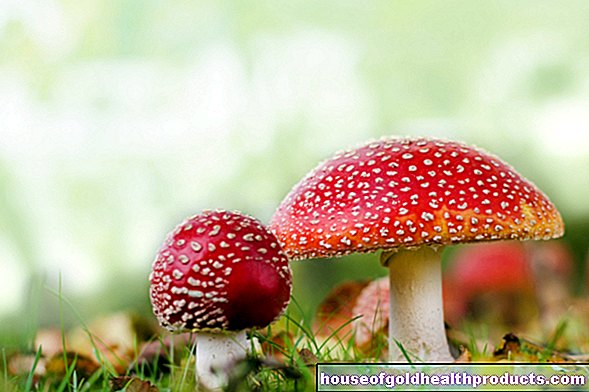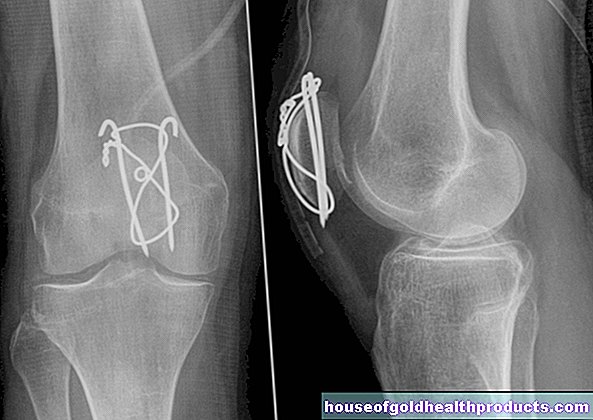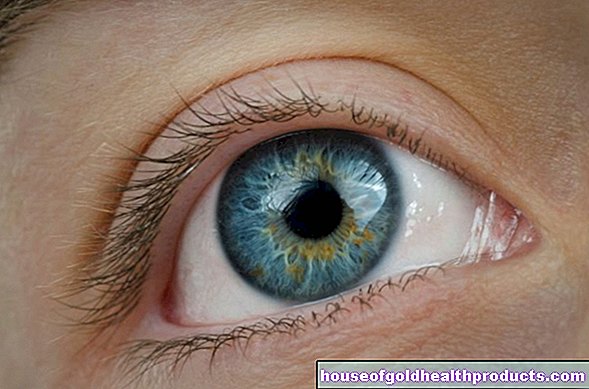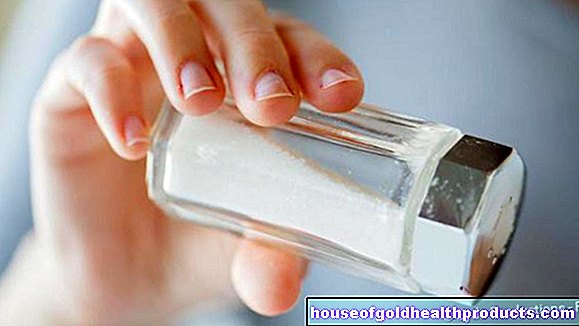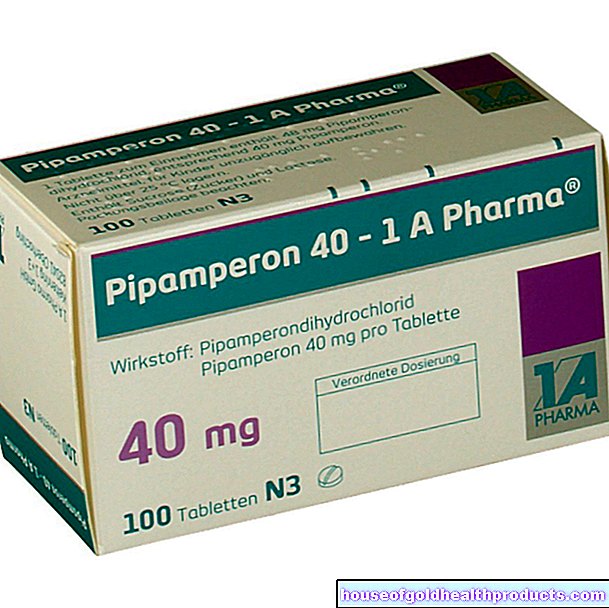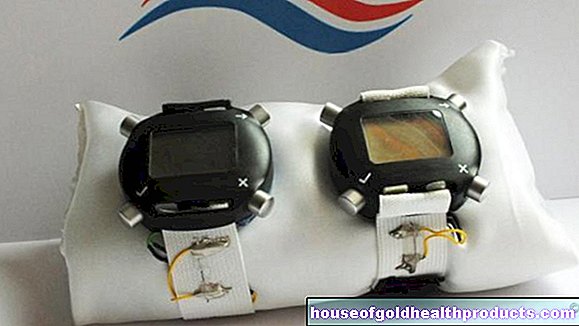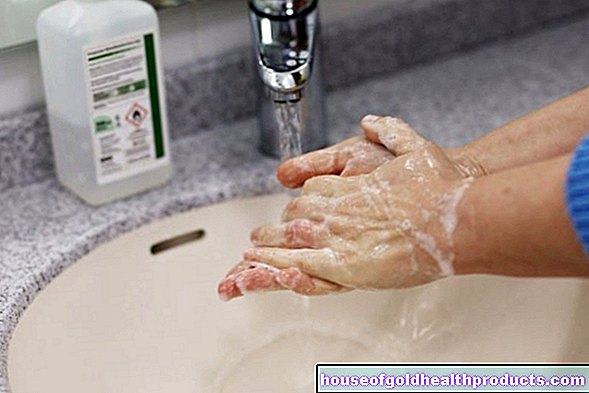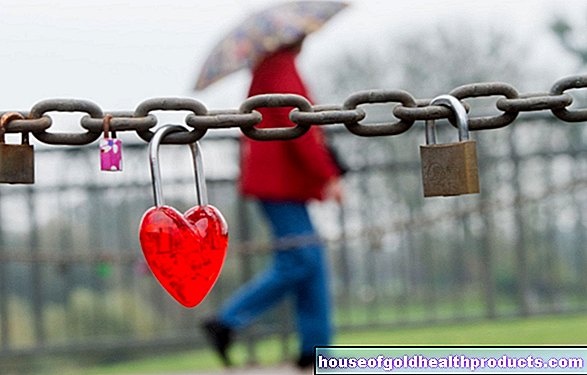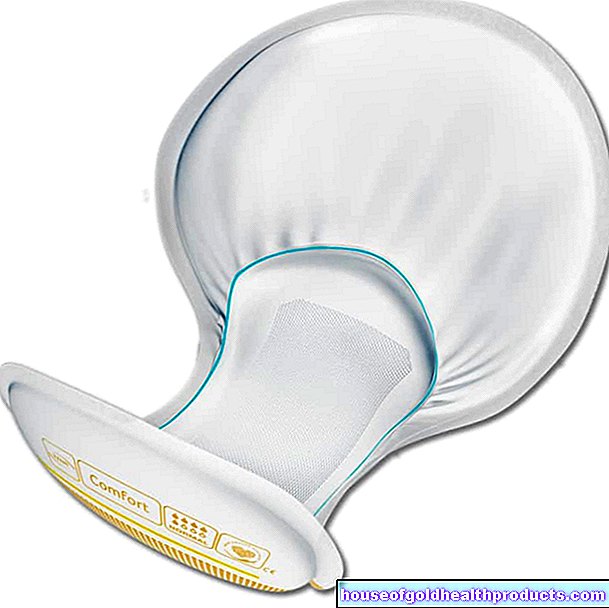Stye
and Carola Felchner, science journalistCarola Felchner is a freelance writer in the medical department and a certified training and nutrition advisor. She worked for various specialist magazines and online portals before becoming a freelance journalist in 2015. Before starting her internship, she studied translation and interpreting in Kempten and Munich.
More about the experts All content is checked by medical journalists.In the case of a stye (medical hordeolum), certain glands on the eyelid are infected with bacteria. The most noticeable symptom is a reddened, painful and pressure-sensitive accumulation of pus (abscess) on the upper or lower edge of the eyelid. A stye is extremely unpleasant, but usually harmless and usually heals on its own. Here you can find out more about the causes, symptoms, treatment and prevention of stye.
ICD codes for this disease: ICD codes are internationally recognized codes for medical diagnoses. They can be found, for example, in doctor's letters or on certificates of incapacity for work. H00

Brief overview
- Definition: acute purulent inflammation on the edge of the eyelid
- Cause: bacterial infection of a gland in the eyelid
- Typical symptoms: reddened, painful and pressure-sensitive swelling (lump) on the inside or outside of the eyelid margin
- Examinations: visual diagnosis, slit lamp examination
- Treatment options: dry heat (red light lamp), if necessary antibiotic ointments and drops, antiseptic ointment, in the case of severe tension pain, excision of the swelling to drain the pus
- Complications: inflammation of the eye socket and / or conjunctiva, eyelid abscess
- Prevention: ensure adequate hand and eye hygiene
Stye: causes
In most cases, a bacterial infection creates a stye. The exact cause is often staphylococci, more precisely Staphylococcus aureus, a bacterium that settles on the skin and mucous membranes. More rarely, strep infections cause a stye. These bacterial strains are mainly found in the mouth and throat.
If these bacteria get into the eye, they can infect certain glands on the eyelids. This is how a stye is made. Depending on which glands are affected, a distinction is made:
- Inner stye (hordeolum internum): In these stye, meibomian glands are inflamed - sebum glands on the inner edge of the eyelid. They release a special liquid that mixes with the tear fluid and prevents it from evaporating prematurely.
- External stye (hordeolum externum): Here the inflammation affects the minor or Zeis glands. These are sweat and sebum glands on the lid. Outer barley grains are rarer than inner ones.
If a stye occurs more frequently or if several styes are formed at the same time, doctors speak of hordeolosis. This should always be clarified by a doctor. Often a weakened immune system is behind it, for example as a result of a previously unrecognized diabetes (diabetes mellitus).
-
Stye: Lid edge care can protect
Three questions for
Dr. med. habil. Wolfgang Herrmann,
Specialist in ophthalmology -
1
Can't I just express a stye myself?
Dr. med. habil. Wolfgang Herrmann
You definitely shouldn't do that! They could push the inflammatory agents into the surrounding tissue. In the worst case, there is a risk of inflammation of the eye socket. Usually, antibiotic eye drops or ointments will slowly heal a stye. Sometimes it is necessary for the stye to be opened or surgically removed - and only the ophthalmologist can do that.
-
2
How long will it take to get rid of the stye?
Dr. med. habil. Wolfgang Herrmann
A stye usually heals within a week. In rare cases, however, the inflammation can become encapsulated and a small palpable nodule is left behind. You can support the healing of chronic problems with regular eyelid care. Treat your clogged eyelid glands with cotton pads soaked with special cleaning solutions or baby shampoo.
-
3
How can I prevent stye?
Dr. med. habil. Wolfgang Herrmann
If you get stye frequently, check out other causes such as sugar disorder. Since chronic eyelid inflammation leads to stye in most cases, those affected can prevent the appearance of stye through regular eyelid care. Similar to brushing your teeth, you have to do this regularly.
-

Dr. med. habil. Wolfgang Herrmann,
Specialist in ophthalmologyHerrmann heads the eye clinic at the Hospital of the Brothers of Mercy in Regensburg.His main focus is on refractive surgery for ametropia and the treatment of retinal diseases.
Stye: Risk Factors
A weakened immune system favors the development of a stye. The immune system can be caused by stress or illness. A stye, for example, is a common side effect of diabetes (diabetes mellitus).
In addition, a stye is also often associated with acne.
Since the causative pathogens in stye are contagious and occur on the skin, a hordeolum can also have its origin in poor hygiene or poor eye care. The pathogens can easily get into the eye through unwashed hands if you rub your eyes. Thorough hand washing is therefore an important measure to prevent stye.
Children are more prone to stye than adults because their immune systems are not fully developed. Another reason for this is that they often play “in the dirt” and then touch their faces.
Symptoms: This is how you recognize a stye
With a stye, the sebum and sweat glands of the eyelid become inflamed. This shows up in a reddened lump on the upper or lower edge of the eyelid. Typical stye symptoms are also:
- Feeling of tension
- strong pain
- reddened eyelid
- swollen eyelid
- Pressure sensitivity
- Pus formation
Depending on which glands are affected by the inflammation, the symptoms appear in different places on the eye:
An internal stye (hordeolum internum) occurs on the inside of the eyelid and is often not visible from the outside. It only becomes visible when the eyelid is folded outwards. The affected eyelid is initially swollen and red and then thickens. In rare cases, an internal stye also affects the conjunctiva of the eye and can cause conjunctivitis (conjunctivitis) and swelling of the conjunctiva (chemosis).
Inner stye
The outer stye (hordeolum externum) affects the minor or Zeis glands, which are located on the edge of the eyelid. The typical stye symptoms (swelling and reddening of the eyelid) occur in the eyelash area with this form. At the beginning, a reddish, painful and pus-filled lump develops, which is easy to recognize from the outside.
Symptoms such as fever or swollen lymph nodes in front of the ears rarely occur with stye. If the disease is severe, the inflammation can spread to the eye socket (orbital phlegmon) or cause eyelid abscesses.
Even if a stye is fairly easy to identify based on its symptoms, you should still see an ophthalmologist to rule out other eye diseases.
Stye: examinations and diagnosis
Even if the mostly harmless stye is easily recognizable by its symptoms and usually heals on its own after a few days, you should consult an ophthalmologist. This can rule out other causes of the inflammation and detect possible complications early on. Further examinations are necessary, especially if the stye on the eyelid causes conjunctivitis.
Eye diagnosis
The doctor can recognize an external stye on the eye by visual diagnosis: It presents as a clearly visible swelling and reddish, pus-filled lump (similar to a pimple) in the area of the eyelashes.
An inner stye, on the other hand, is often not recognizable at first glance because glands on the inner edge of the eye are inflamed. In this case, the doctor will carefully fold the eyelid over to examine the inside of the eyelid.
Slit lamp examination
If there is stye in the eye, the doctor carries out what is known as a slit lamp examination: the doctor can use a microscope and a special lamp (slit lamp) to look at the eye enlarged. He particularly examines the following structures:
- Eyelids
- Eyelid edges
- Conjunctiva
- Tear film
- Tear meniscus
Exclusion of other diseases
During his examinations, the doctor must rule out other causes that could be responsible for the inflammation in the eye. A stye, for example, is very similar to a hailstone (chalazion) and can easily be confused with it. However, it is a chronic inflammation of the meibomian gland, which is not purulent and does not hurt. The cause of this is usually a blocked gland duct.
Stye: treatment
A stye is an annoying and painful business. The latter in particular can worry those affected and make them unsure what to do with a stye.
Under no circumstances should you squeeze a stye! It can easily happen that the contagious pathogens are carried into the healthy eye, for example, and the inflammation spreads further.
But as uncomfortable as the stye may be, in most cases it will heal on its own. After a few days it will open, the pus will drain and the inflammation will subside. In most cases, no special stye treatment by a doctor is necessary.
However, there are a few ways to aid and speed up the healing process of a stye:
Stye treatment with dry heat
One way to treat a stye is to apply dry heat in the form of red light locally. You can also do this stye therapy at home.
The stye - more precisely the closed eye - is irradiated three times a day for ten minutes each time with a red light lamp. The heat from the red light lamp promotes blood circulation in the eye. The stye opens up faster so that the pus can drain away.
Discuss a red light application with your doctor first. He can explain the exact procedure to you. He will also explain what to watch out for when using red light, especially if you are taking any medication. He can also give you tips on eye care.
Damp heat is not advisable!
Often the use of moist heat is recommended as stye therapy, for example in the form of moist and warm compresses or compresses. Most medical professionals advise against this. Moist heat encourages the pathogens to be spread further: the moisture softens the skin and the bacteria can spread more easily.
Stye treatment with eye ointment and drops
To support the stye therapy, the doctor can prescribe eye ointments or eye drops with an antibiotic agent. The antibiotics work against the bacteria that cause the stye and prevent the inflammation from spreading further. The eye drops are often used during the day and the ointment at night.
Such antibiotics in the form of ointments or drops are very often used for an internal stye, because here the risk is particularly great that the inflammation will spread to the conjunctiva and the eye socket.
Stye treatment with tablets containing antibiotics is only necessary if the inflammation has already spread.
Sometimes a disinfecting (antiseptic) eye ointment is used on stye, for example with the active ingredient bibrocathol.
Barley grain: operational opening
In rare cases, a stye will not open on its own and the inflammation will last longer. Then a small procedure by a doctor (usually an ophthalmologist) is necessary. This carefully opens the stye with a small incision under local anesthesia so that the pus can drain away.
Stye: home remedies
Many people use home remedies for a stye. These include, for example, moist and warm compresses (e.g. with chamomile tea) as well as warm pads and poultices. However, doctors often advise caution here. Such home remedies can sometimes do more harm than good. As mentioned above, moist compresses, for example, can soften the skin on the eyes and promote the spread of bacteria.
The best “home remedy” for stye (and other diseases) is a strong immune system. Because then the pathogens that cause the eye infection have a harder time multiplying. You can effectively support your immune system with a healthy, vitamin-rich diet and sufficient exercise.
You can find out which home remedies for a stye in detail and what you should know about them in the article Stye - home remedies.
Stye: disease course and prognosis
The prognosis for stye on the eye is usually good, and the course is unproblematic. In most cases, the stye heals on its own: after a few days it opens and the pus drains away.
Only in rare cases do complications occur with a stye in the eye. The most common are:
- Inflammation of the conjunctiva: A stye can cause conjunctivitis (conjunctivitis). Swelling of the conjunctiva (chemosis) is also possible.
- Inflammation of the eye socket: If the disease is severe, the inflammation can spread to the eye socket (orbital phlegmon). But that rarely happens.
- Lid abscess: In exceptional cases, a stye can also cause eyelid abscesses in severe disease. An abscess is also called a boil or boil.
How to prevent a stye
Since a stye is contagious, you should maintain proper hand and eye hygiene. The pathogens live on the skin and mucous membranes and easily get into the eyes via the hands. So wash your hands regularly and do not look at yourself with dirty hands.
As a contact lens wearer, you must wash your hands particularly thoroughly before you look at yourself while inserting or removing the eyewear. Also, make sure that you always store your contact lenses properly and clean them thoroughly. This prevents infections in the eye like a stye.
If you already have an infection, you should not touch the stye. If you then unconsciously grab your healthy eye with the hand in question, it can also become infected.
Tags: pregnancy sex partnership interview


